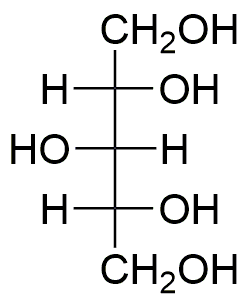Xylitol is widely utilized in research focused on:
- Dental Care Products: Xylitol is commonly found in toothpaste and mouthwashes due to its ability to inhibit the growth of cavity-causing bacteria, making it a popular choice for promoting oral health.
- Food Industry: As a sugar substitute, xylitol is used in various food products, especially sugar-free candies and chewing gums, providing sweetness without the calories of sugar.
- Pharmaceuticals: Xylitol serves as a sweetening agent in liquid medications, improving palatability for patients, particularly children, while also having a low glycemic index.
- Cosmetics: In skincare products, xylitol acts as a humectant, helping to retain moisture and improve skin hydration, making it beneficial in lotions and creams.
- Animal Nutrition: Xylitol is used in pet foods and supplements, promoting dental health in pets and providing a low-calorie alternative to traditional sweeteners.
General Information
Properties
Safety and Regulations
Applications
Xylitol is widely utilized in research focused on:
- Dental Care Products: Xylitol is commonly found in toothpaste and mouthwashes due to its ability to inhibit the growth of cavity-causing bacteria, making it a popular choice for promoting oral health.
- Food Industry: As a sugar substitute, xylitol is used in various food products, especially sugar-free candies and chewing gums, providing sweetness without the calories of sugar.
- Pharmaceuticals: Xylitol serves as a sweetening agent in liquid medications, improving palatability for patients, particularly children, while also having a low glycemic index.
- Cosmetics: In skincare products, xylitol acts as a humectant, helping to retain moisture and improve skin hydration, making it beneficial in lotions and creams.
- Animal Nutrition: Xylitol is used in pet foods and supplements, promoting dental health in pets and providing a low-calorie alternative to traditional sweeteners.
Documents
Safety Data Sheets (SDS)
The SDS provides comprehensive safety information on handling, storage, and disposal of the product.
Product Specification (PS)
The PS provides a comprehensive breakdown of the product’s properties, including chemical composition, physical state, purity, and storage requirements. It also details acceptable quality ranges and the product's intended applications.
Certificates of Analysis (COA)
Search for Certificates of Analysis (COA) by entering the products Lot Number. Lot and Batch Numbers can be found on a product’s label following the words ‘Lot’ or ‘Batch’.
*Catalog Number
*Lot Number
Certificates Of Origin (COO)
This COO confirms the country where the product was manufactured, and also details the materials and components used in it and whether it is derived from natural, synthetic, or other specific sources. This certificate may be required for customs, trade, and regulatory compliance.
*Catalog Number
*Lot Number
Safety Data Sheets (SDS)
The SDS provides comprehensive safety information on handling, storage, and disposal of the product.
DownloadProduct Specification (PS)
The PS provides a comprehensive breakdown of the product’s properties, including chemical composition, physical state, purity, and storage requirements. It also details acceptable quality ranges and the product's intended applications.
DownloadCertificates of Analysis (COA)
Search for Certificates of Analysis (COA) by entering the products Lot Number. Lot and Batch Numbers can be found on a product’s label following the words ‘Lot’ or ‘Batch’.
*Catalog Number
*Lot Number
Certificates Of Origin (COO)
This COO confirms the country where the product was manufactured, and also details the materials and components used in it and whether it is derived from natural, synthetic, or other specific sources. This certificate may be required for customs, trade, and regulatory compliance.


